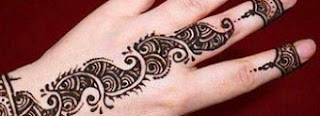8 Mehandi Designs For Hands To Inspire You – The Complete Guide
Every woman swears by mehandi, if you have to look ethnic for an important ritual then without mehendi the look will be absolutely incomplete. Mehandi is not just loved for its beauty; it is an important part of the whole ritual and is believed to bring fortune.Mehandi is derived from the Sanskrit word Mendhika, the use of turmeric and henna paste is supported by Hindu ritual texts and history.
Mehendi or Henna used in India is derived from mehendi plant which is scientifically known as Lawsonia Inermis and is popularly called the henna tree. This flowering plant is native to Arabian Peninsula, North Africa, Near East and South Africa. Mehendi custom is celebrated with pomp in many Arabian countries. History proves that mehendi or Henna was used in Europe in 19th century.This Arabic culturehas become an integral part of Indian custom. Mehendi has become an important ritual in all communities in India and is usually followed by other fun filled programs like DJ nights.
Henna is the paste that is made from the stems and leaves of the henna plant and when it is applied on the hand it become mehendi. The leaves and stems are dried and grounded into powder. To make the henna paste you have to first sift the henna powder using a nylon strainer. This will help to remove chunks that can clog the mouth of the applicator. Then pour the henna powder in a bowl, add quarter cup or 60ml of lemon juice and whisk it into a thick consistency.Then add sugar and essential oil (Lavender oil, tea tree, Cajuput or Raven Sara oil) and whisk it really well till the texture becomes silky smooth. Cover the bowl with a cling wrap and keep it in room temperature till the dye separates and comes to the surface.Add more lemon juice to the dye that separates and comes to the surface till you get yogurt like consistency. Pour the paste into a plastic cone and twist the top of the cone twice and secure it tightly with a rubber band. Apply gentle pressure with your thumb on the top of the cone to dispense the mehendi. If this doesn’t work then you have to clip the tip of the cone to enlarge the opening, but be careful not to make a big cut since this will spoil the design.
Always wash your hands with soap and water before you apply henna. You can also use alcohol based lotion if your skin is oily, and to get the dark colour on your handsyou can apply mehendi oil as well. The U.S. Food and Drug Administration (FDA) don’t recommend henna to be used directly on the skin. There are reports of contact dermatitis, an allergy caused by the pigment present in the dye. Discolouration of the skin or Hypopigmentation has also been reported. So in United States it is used as a hair dye. If you had allergic reaction to henna avoid it totally. You can also do a patch test before applying it on your skin. Try to your tattoo on your upper arm where you can cover it with sleeves, if you don’t want to reveal the tattoo that has faded. Let it wear off naturally, don’t rub or pick at it. Take some protection before you apply mehendi, especially sticker mehendis that are available these days. If you are using glitters and stones make sure the adhesive that is used is skin friendly. If you get any rash or allergy visit the doctor immediately.
Consumers and dermatologists state that harmful chemicals like para-phenylenediamine (PPD) are present in the mehendi cones. Do you know the same chemical is used in ink cartridges for the printing and photocopying machines? PPD is toxic and can cause body pain, restlessness and itching. Always make the henna paste at home. I know the readymade cones give you the desirable red and black colour, but why take the risk?
Usually in Pakistan, the traditional mehendi is used but nowadays, you can also find red mehendi as well as black mehendi being used. Black mehendi is very popular in Arabic mehandi designs for hands or feet and now is being used to draw borders of the designs to make them prominent.
Here are 36 amazing Mehandi designs for hands:
























































































































































